#university of strathclyde
Text

Pic: Chris Stein
28 notes
·
View notes
Text
I GOT ALL 5/5 OFFERS FROM ALL MY UNIS
I'M SO EJSNDHDBDGHDBD I CAN'T BELIEVE IT. I WILL BE GOING TO THE UK THIS SEPTEMBER TO STUDY ENGLISH LIT AT UNI. I'M FLABBERGASTED AND OVER THE MOON
#ucas#university of birmingham#university of liverpool#university of Strathclyde#university of Leicester#queen mary university of london#university
2 notes
·
View notes
Text
Christmas at the Tech, 1912-1963 - Part 3: Christmas Lectures for Young People
To conclude our short series of posts about Christmas activities at Strathclyde’s antecedent institution, the Royal Technical College (RTC, known from 1956 as the Royal College of Science and Technology), we look at the annual Christmas Lectures for Young People. These commenced in the 1950s, upon the suggestion of the Scottish Education Department (SED). Popular science lectures for older children were then an established feature of the Christmas season in London…
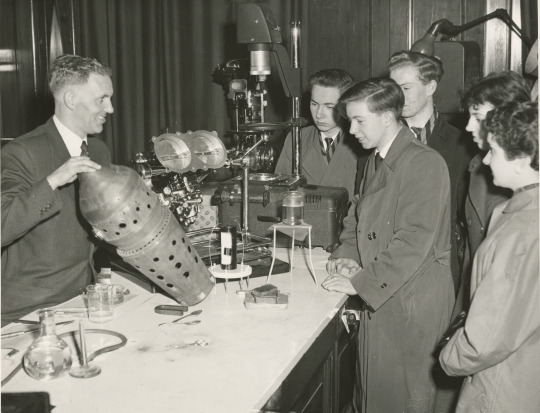
Christmas Lectures for Young People
The RTC’s annual Christmas Lectures for Young People commenced in the early 1950s, upon the suggestion of the Scottish Education Department (SED). Popular science lectures for older children were then an established feature of the Christmas season in London, and the SED, feeling that ‘Scotland was lagging behind England in this matter’, approached the Director of the RTC, Dr (later Sir) David Anderson, in 1951 with the idea of providing similar lectures for secondary school pupils in the West of Scotland.[1] Anderson responded positively, and the first Christmas Lectures for schoolchildren in Glasgow and the West of Scotland, organised by the RTC in conjunction with the SED, were delivered on 3 and 4 January 1952. The presenter, Dr Charles H. Giles of the RTC’s Department of Technical Chemistry, addressed the theme of ‘Chemistry and Colour Photography.’
Having proved successful, the lectures then became a permanent feature in the RTC calendar, taking place every December. Lectures on two different topics, delivered by separate presenters, were offered each year, with both presenters repeating their lecture a second time so that as many children as possible could attend. In session 1953-1954, external academics from the University of Edinburgh and University College, Dublin were invited to come and deliver the lectures. However, it proved so challenging for them to arrange and rehearse their practical demonstrations at the RTC in advance that, in subsequent years, the speakers were selected solely from the staff of the RTC.
The Christmas Lectures for Young People were carried on by the RTC’s successor bodies, the Royal College of Science and Technology (RCST, 1956-1964) and the University of Strathclyde (1964 onwards). While their primary purpose was to inspire and instruct children in aspects of science and technology, the lectures also served to entertain, and the presenters often chose topics that would appeal to children, such as ‘Pests and Parasites’ (1954) and the aptly named ‘Combustion – Some Burning Questions’ (1958). The photograph above shows Dr P.T. Carter, senior lecturer in the Department of Metallurgy, explaining the principles of jet and combustion engines to some of the children who heard him speak on ‘Metals in the Service of Mankind’ in December 1956 (reference: OP4/191).
[1] OE/12/12/24, Papers and correspondence relating to Christmas Lectures. Note on Christmas Lectures, c.1955.
#large#Archives and Special Collections#University of Strathclyde#EYA2022#explorearchives#Christmas#Royal Technical College#Royal College of Science and Technology#Christmas at the Tech
3 notes
·
View notes
Text
Suleman Dawood biography: 10 things about University of Strathclyde student
Suleman Dawood was a student of the University of Strathclyde in Glasgow, Scotland. Here are 10 more things about him:
youtube
View On WordPress
0 notes
Text
CRIME FICTION TRANSLATOR INTERVIEW: JOSEPH FARRELL
Joseph Farrell is Professor Emeritus in Italian at the University of Strathclyde, Glasgow. He has translated several Italian novels by the likes of Valerio Varesi and Leonardo Sciascia. His theatre works include English editions of plays by Dario Fo, Eduardo De Filippo, Carlo Goldoni and Luigi Pirandello plus three film scripts by Giuseppe Tornatore. He is co-author with Franca Rame of Non è tempo di nostalgia and La mia vita, le mie battaglie with the novelist Dacia Maraini. His latest Varesi translation is The Unseen, which has been published in the UK through Patrician Press.
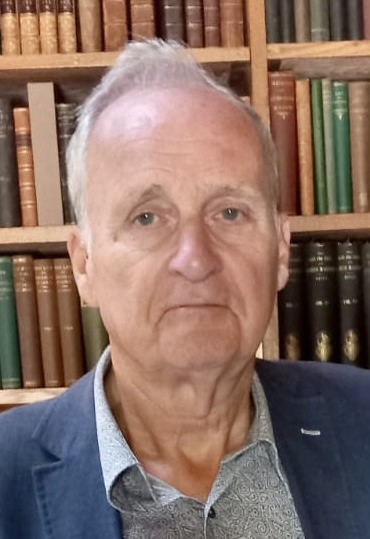
Matthew Ogborn: How much fun is it to translate Valerio's novels, which are packed with so much atmosphere unique to a particular region and so many characters that sing on the page in manifold ways?
Joseph Farrell: "Every exercise of translation is a mixture of enjoyment and frustration, a combination of challenges which can lead to a pleasurable sense of achievement or to downright despair. The reference to the 'atmosphere' which is 'unique to a particular region' goes to the heart of the matter. Atmosphere is intangible but vital, and recognising it as central to translation work is the key to the success of any translation. Not all linguistic dilemmas can be wholly resolved, although most can with care and imagination, but there are elements which are specific to the individual writer, some of which escape their notice and as such defy the translator's efforts.
"George Steiner identifies four moments in the process of translation: trust, aggression, incorporation, and retribution. 'Trust' and 'retribution', he writes, honour the source text and the author's intentions, while 'aggression' and 'incorporation' are associated with the efforts of the translator. I like that distribution of responsibility between writer and translator.
"Translation is thus a co-operative work, even if the original writer is dead or unco-operative. Valerio Varesi was highly co-operative, always prepared to answer queries and enter into discussion. A watershed book on translation was Lawrence Venuti's The Invisible Translator (1995) but never before has the translator been so visible and translation so much discussed, rarely by practitioners. Tim Parks is an exception, and unsurprisingly his essays are the ones I find most helpful and acute. Venuti made a much discussed distinction between two tendencies in translation, the tendency to 'foreignise' and the competing wish to 'domesticate'. Parks said that he mistrusts any translator who does not feel both of these urges.
"I agree, but the tension between two remains. Translation is a process of remaking, but what is the writer's role and what is the translator's? This is not to lend any credence to unjustifiable notions of the translator as 'second author', since the author's part is to develop plot, character, individual scenes and encounters, debate questions of values, advance certain views and reject others, and together these elements constitute the author's vision and dictate his style.
"The translator's task is to convey this creation in another language to readers of another culture. The translator has to devise voice and context, to collaborate with, and never contest, a recasting of the original. Transposing the vision is feasible, if challenging, but re-creating the style is the equivalent of the labours of Hercules. D. H. Lawrence, the greatest of the writer-translators – whatever the deficiencies of his knowledge of Italian – insisted on respecting the specificity of Verga's Sicilian work, and particularly of his dialect.
"One of Valerio Varesi' remarkable talents as a writer is his ability to create lively, engaging dialogue, notable especially in the interrogation scenes where his detective is intent on drawing out information, often without alerting the other person he is under suspicion. Equally, the more personal conversations between Commissario Soneri and Angela are reported with skill and sensitivity.
"His works are set in very particular geographical area, the city of Parma and the banks of the Po. He creates the terrain for his fiction, and his readers return to it with the joy of recognition of characters and landscapes. This carefully defined landscape presents no greater barrier to the task of the translator or the enjoyment of the reader than does a novel set in Dostoyevsky's Saint Petersburg or Balzac's Paris. As I noticed while translating successive novels by Varesi, the passages of descriptive prose, particularly of the scenery along the Po or in the countryside outside Parma, were reduced in number in successive books. Perhaps he was unaware of this shift, or felt that he had made his scene sufficiently concrete in the early novels, for there is a sense that all his crime fiction constitute one ongoing, developing novel.
"However, they are also set in an equally definable social, moral or even spiritual zone. The classical detective story, Anglo-American in origin, was essentially a moral tale, and so too are Varesi's. Further, his characters are vividly drawn, bursting with life, with a richness of experience which expressed not just lived experience but elements of local and national history. That added to the delight, and difficulty, of rendering his work in English."
How does Valerio differ from the other Italian authors that you translate from the native language?
"It is the merest cliché to say that every writer worthy of the name expresses his own world and his fiction expresses his reaction to it. Varesi is interesting for, among other things, being author of two genres of fiction normally held to be quite distinct – the crime story and the political novel. On the one hand, he has written a trilogy of novels on post-war Italy, while on the other he has written a series of detective stories featuring Commissario Soneri, but in important aspects the two series merge. His gialli are not merely works written as pastimes or vacuous entertainment to while away empty hours, perhaps while travelling by train; they constitute examinations of Italian society.
"Soneri and Angela recall their own youth in the years of the contestazione, evoking not just the passion of those years but the belief, commitment and hope of that time, and contrast them with the cynicism and shallowness of the power-worship of political practice now. He surveys aspects of Italian society by means of the detective novel. For instance, in River of Shadows, he examines the complex legacy of the Resistance, in Gold, Frankincense and Dust the ecclesiastical influence and in The Lizard Strategy he probes political corruption.
"In some novels, he introduces an oracular figure, an outsider, perhaps a displaced tramp or a priest, whom Soneri meets to converse on matters which transcend the crime investigation and which probe the values, or lack of values of society. This ability to pose awkward political and social questions differentiates his work from that of his contemporary crime writers in Italy or abroad."
Both as a translator and writer yourself, what is it that makes Italy so fascinating to you and how important is crime fiction in commenting on society particularly with the current political landscape shifting towards the right again?
"There are two very different questions here: a) I have written extensively for newspapers and journals on Italian politics, and the main point I want to make is that the love I feel for Italy, its culture and society – and for Sicily in particular – is of a quite different order from the political dimension of Italian life. My affinity with things Italian is entirely impervious to any distaste for the conduct of politicians. I should add that I also detest the condescending way in which British commentators tend to observe political behaviour in Rome, or Palermo, as though the conduct of politics in Westminster were of an intrinsically superior level. This judgment has suffered a jolt with events at British Cabinet level in the 21st century.
"I went to Rome in the 1960s and attended university for three years. I was studying philosophy so a knowledge of the literature came later, but I was immediately fascinated by the city, the exuberance of life lived at a different tempo from any I was accustomed to, even by the climate which made possible the banal fact of living outdoors. I was also drawn by Rome's overlapping historical periods as visible in stone, and particularly by its architecture. Nothing made as strong and impact as the diverging styles, and rivalry, of the 18th century contemporaries, Bernini and Borromini. I had no interest then in Italian politics. This multi-dimensional fascination with Italy cannot be shaken.
"b) In crime fiction, there is no Italian equivalent of the village or drawing murder story of the Agatha Christie type, even if Christie herself is translated and widely read. There is a map of Italian crime writers which covers all Italy, Varesi in Parma, Sciascia and Camilleri in Sicily, Lucarelli in Bologna, and Machiavelli in Turin. They are all linked to their own native places, but the probes in their crime fiction reveal the deep ambiguity of their relationship to these places. They are not afraid to expose beneath the surface decencies a hidden, concealed foundations. This probing has become more relentless since the emergence of Berlusconi as a political force, and the emergence of the League as a national, not regional power. It is reasonable to assume that this wish to view crime not as the act of a deviant individual but as a symptom of a social ill will continue under the government of the extreme right coalition led by Giorgia Meloni."
Read the English version of my Valerio Varesi interview HERE.
Leggi la versione italiana della mia intervista a Valerio Varesi QUI.
#joseph farrell#crime fiction#valerio varesi#agatha christie#sciascia#camilleri#lucarelli#machiavelli#parma#sicily#bologna#turin#bernini#borromini#commissario soneri#the unseen#river of shadows#the lizard strategy#University of Strathclyde#Dario Fo#Eduardo De Filippo#Carlo Goldoni#Luigi Pirandello#Giuseppe Tornatore#Franca Rame#Non è tempo di nostalgia#La mia vita le mie battaglie#Dacia Maraini#Patrician Press#George Steiner
1 note
·
View note
Text
本科办理Strath硕士毕业成绩单Q/薇28013 71829办理思克莱德大学本科/硕士学生ID卡offer录取通知书,办Strath学生ID卡/offer录取通知书,办Strath【本科毕业成绩单】,办Strath硕士毕业成绩单/留信认证,ECE认证/WES认证University of Strathclyde Diploma

#本科办理Strath硕士毕业成绩单Q/薇28013 71829办理思克莱德大学本科/硕士学生ID卡offer录取通知书#办Strath学生ID卡/offer录取通知书#办Strath【本科毕业成绩单】#办Strath硕士毕业成绩单/留信认证#ECE认证/WES认证University of Strathclyde Diploma
0 notes
Text
Have some more Saltburn Thoughts from someone who was y'know
Sentient in the UK in 2006/2007
Because it's honestly pretty important in a lot of the Stuff About It.
So I was 13/14, so obvs a little younger but!
Section 28 had been repealed 3 years before, which effectively meant schools couldn't teach about anything other than heterosexual relationships- and was still found to be impacting sex ed in 2016. Farleigh being an absolute pansexual menace is honestly fucking iconic.
This also goes into why Felix and Ollie didn't just fuck- when I was in secondary school and college, there were maybe one or two "out" lgbtqi+ folks, and even then... if you weren't popular, you would absolutely be a target for horrendous bullying. Felix's family may have been cool, but Oliver would have just come from a world where Gay was a go-to insult.
Yes, everyone dressed Like That. Y2k fashion nowadays has taken the good parts, but the peak of girl fashion was wearing jeans under miniskirts and about 3 layered t-shirts. LOW RISE JEANS. Absolutely awful.
You couldn't go anywhere without hearing The Black Parade, which tbh probably explains a lot given that I was at a very malleable stage in development.
Posh people are absolutely from another planet. I did a course thingy with my school's science club at the University of Strathclyde and the one posh kid there was absolutely astounded by, say, us not knowing how to ski. He was a cool dude, though.
EVERYBODY cool at my school smoked. I'm talking 13 year olds. It was A Thing and it Was Cool. I was not cool, so I escaped.
96 notes
·
View notes
Text
Christmas at the Tech, 1912-1963 - Part 1: Students’ Christmas Ball and Children’s Christmas Party
With Christmas time approaching and most of Strathclyde’s students and staff back on campus following the pandemic, many in-person celebrations and festive activities are being planned for the first time in several years. This series of three blog posts looks back at some of the Christmas activities associated with Strathclyde’s antecedent institution, the Royal Technical College (RTC), renamed in 1956 as the Royal College of Science and Technology (RCST) and popularly known as ‘the Tech’. We begin by considering two of the most eagerly anticipated events of all: the students’ Christmas Ball and the Children’s Christmas Party.
Christmas Ball
Organised annually by the Students’ Representative Council (SRC), the Christmas Ball was a major event in the RTC and RCST social calendar and provided a welcome opportunity for students to let their hair down following the end of term exams. To encourage ticket sales, the SRC’s Dance Committee publicised the Ball in the student magazine, The Mask, and in the student newspaper, the Telegraph. The advertisement below was placed in the December 1938 issue of The Mask (reference: OJD/1/2/76).

The Dance Committee (later the Entertainments Committee) invested considerable time and effort to ensure the Ball’s success. In the early years, a hotel in central Glasgow would be booked to host the event: in 1926, for example, the Christmas Dance took place at the Grand Hotel, and in 1930 and 1931 the venue was the Ca’ D’Oro Ballroom. By the 1940s, however, the Christmas Ball generally took place in the RTC’s own Assembly Hall, which doubled as the Exam Hall. The new Student Union building in John Street, which was opened in 1959, later provided appropriate facilities for hosting the Ball and similar functions.
When the Ball was held on campus, the Committee had the unenviable task of decorating the hall for the occasion. In 1944, the RTC’s Navigation Department loaned them some flags for this purpose, ‘and it was [also] decided that the members of the Dance committee should look around the local shops for streamers etc’.[1] In subsequent decades, as the numbers of students studying at the RTC expanded, more resources were available and the new Union building offered increased space and scope for decorations, the Committee’s plans became more ambitious. The early 1960s saw the Christmas Ball organised according to a different theme each year, ranging from ‘Arctic Aurora’ (1960) and ‘Tropical Bally-Ho!’ (1961) to ‘Neptune’s Nocturnals’ (1962: programme pictured below, reference OJA/18/2/3) and ‘Black Friday’ (1963).
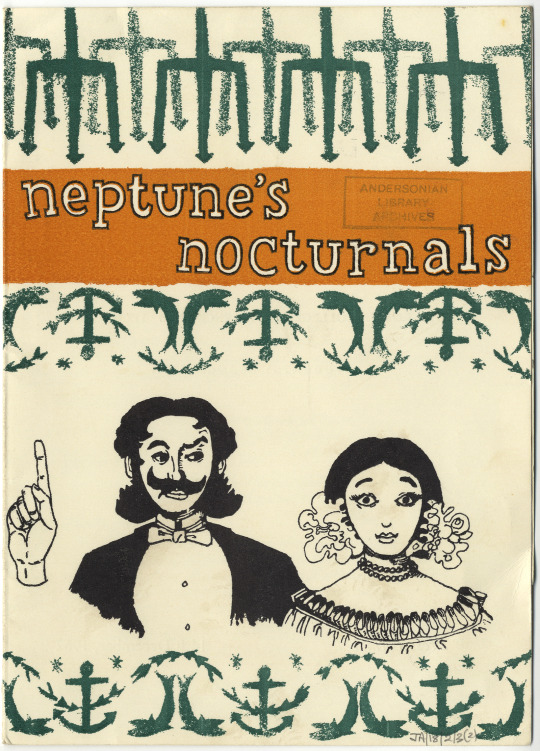
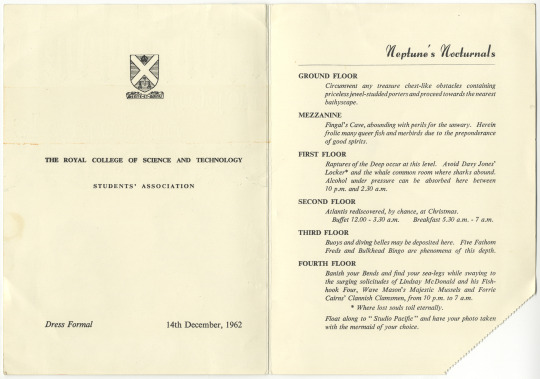
Designing and constructing props and decorations for a themed event demanded specific skills for which the Committee turned to members of the Architecture and Building Society, the RCST’s club for architecture students.[2] As the Committee minutes show, the ‘Architects’ club’ chose the theme for the Ball from a shortlist of suggestions supplied to them by the Committee, opting for that which offered the best artistic and practical possibilities.[3] As well as designing and building the set and props, the architecture students also designed the Ball tickets. Unfortunately, we have no photographs of the themed sets and decorations, but they were impressive, at least according to the writer of this letter in the student newspaper of 13 January 1961:
Dear Madam,
I feel I must write an
appreciation of the decorations for
the Christmas Ball. The Assembly Hall
and the Fourth Floor landing, were
masterpieces in decoration and the
spiral of tinsel down the stair well
was a magnificent welcome on entering
the building. The Architects who de-
-signed the “set” as it were, and also
everyone who helped in any way with
the decorating of the building are to
be congratulated on their wonderful
achievements.
I must, however, deplore
the practice carried out at the Ball
itself, of stripping the Christmas tree
in the Dining Hall of its tinsel so that
the female participants in the Ball
might be decorated still further. Not
only is this tinsel costly, but it did
not greatly enhance the coiffures of the
ladies who were seen wearing it.
To conclude, thanks to the
architects, for the splendid decorations
and no thanks to those members who
spoiled it slightly by ruining the Tree.[4]
The Committee’s labours did not end with decorating the hall, for one of their most important tasks was to engage a suitable band or bands for the evening. The 1950s and 1960s saw combinations of dance bands and jazz bands booked to play at the Ball; by the early 1960s, an additional ‘beat band’ was also booked to play during the interval. The Committee was further responsible for hiring caterers to provide a buffet; arranging the provision of at least one liquor bar; and organising screenings of several short films (mostly cartoons) in rooms adjacent to the main dance hall. If funds permitted, the evening’s entertainment would extend to a cabaret: a ‘Malayan fire eater’, who also performed hypnotism, was booked as the cabaret artist for the Christmas Ball in 1961.[5] Less spectacular (and less dangerous) amusements were also laid on for that year’s event, including ‘Enticing Bingo Sessions’.[6]
As the decades progressed, so too did the hour at which the Ball concluded. In the 1930s, the event tended to finish at 2.00am. In 1944, the students sought permission for the Ball to last all night, but the RTC’s Director, Sir Arthur Huddleston, was averse to the idea.[7] By the late 1950s, however, the Ball was generally scheduled to conclude at 6.00am and ‘breakfast tickets’ were available, entitling each holder to enjoy a hot meal in the early morning before making their way home.[8] In 1960, a double ticket for the Ball cost 25/ and a breakfast ticket cost 3/6d.
Annual Children’s Christmas Party
As well as a Christmas Ball for the students, the Students’ Representative Council of the RTC and RCST organised an annual Christmas party for younger children from local children’s homes, held in the Students’ Union. Transport and catering costs for this event were met from the proceeds of Wednesday lunchtime showings of Fred Quimby’s Tom and Jerry cartoons, organised by the Entertainments Committee. Each student attending the ‘Freds’, as these cartoon screenings were known, was asked to give a donation of 3d.[9]
According to this report in the student newspaper of 13 January 1961, the children’s party was a loud, frenetic, but happy occasion:
The Children’s party was held in
the Union on Wednesday the 28th
December. Children from homes and
orphanages in Glasgow as well as the
children of Union employees were given
a first class treat. [To] The music played
by the members of the College Music
Society, the children enjoyed all their
favourite singing games i.e. “The
Farmer Wants a Wife”, “The Grand Old
Duke of York”, and “Pass the Parcel”.
The band survived although surrounded
by hosts of inquisitive children who
found the microphone a very intriguing
gadget. Lemonade, cakes, jelly, fruit
and ice cream disappeared at an alarming
rate. The children had a break from
balloon bursting and musical
games in an excellent little film show.
Then Santa, alias Ian McClure, gave
them each a present before they went
home.[10]
A more candid report of the same event appears in another section of the newspaper, revealing that, due to an outbreak of mumps among the younger children at one of the homes, a group of 14-year-olds had been dispatched to attend the party in place of the usual 3-8-year-olds. Unsurprisingly, ‘They did not appreciate the Farmer wants a Wife as much as usual and Santa felt perhaps just the tiniest bit embarrassed . . . by giving “Bunny Painting Books” to mature youths. Luckily they were wrapped.’[11] Despite this hiccup, the annual party was both a welcome source of diversion and entertainment for the children, and a rewarding, if physically exhausting afternoon for their student hosts.
Today, Strathclyde’s students and staff continue to bring Christmas cheer to disadvantaged children in Glasgow through the University’s annual Christmas Toy Appeal. Since its inception in 2016, the appeal has provided approximately 8,000 gifts of toys, which have been distributed to six schools and nurseries and 14 charities. Staff and students wishing to participate in this year’s appeal may hand in donations of new, unwrapped toys to the University of Strathclyde Library until 12 December. Cash donations may also be made by following this link: https://onlineshop.strath.ac.uk/product-catalogue/student-experience/widening-access/christmas-toy-appeal-2022.
[1] OJA/6/1, Students’ Representative Council Dance Committee minute book, 1941-1946: minute of meeting on 10 November 1944.
[2] OJA/6/3, Students’ Representative Council Entertainments Committee minute book, 1958-1964: minute of meeting on 24 October 1960, p.92.
[3]OJA/6/3, Students’ Representative Council Entertainments Committee minute book, 1958-1964: minute of meeting on 9 November 1962, p.214.
[4] OJD/3/1, Telegraph vol.1, no.12, 13 January 1961, p.4.
[5] OJA/6/3, Students’ Representative Council Entertainments Committee minute book, 1958-1964: minute of meeting on 9 November 1962, pp.214-216.
[6] OJD/3/2, Telegraph vol.2, no.7, 8 Dec 1961, p.1.
[7] OJA/6/1, Students’ Representative Council Dance Committee minute book, 1941-1946: minute of meeting on 10 November 1944.
[8] OJA/6/3, Students’ Representative Council Entertainments Committee minute book, 1958-1964: minute of meeting on 4 November 1958, p.8.
[9] OJD/3/1, Telegraph vol.1, no.12, 13 January 1961, p.5; OJA/6/3, Students’ Representative Council Entertainments Committee minute book, 1958-1964: minute of meeting on 4 November 1959, p.44.
[10] OJD/3/1, Telegraph vol.1, no.12, 13 January 1961, pp.3-4.
[11] OJD/3/1, Telegraph vol.1, no.12, 13 January 1961, p.5.
#large#Archives and Special Collections#University of Strathclyde#EYA2022#explorearchives#explore your archive#Christmas#20th century#Royal Technical College#Royal College of Science and Technology#Christmas at the Tech
3 notes
·
View notes
Note
Good morning! Grandma did some networking last week, huh?
https://www.instagram.com/p/C5GjhJVoSLc/?igsh=MW96NXdmYnlzZnR5Mg%3D%3D&img_index=
Dear Networking Anon, good evening to you (the day after, sorry: it is what it is),
As you probably know, I have written a bit about it last week, prompted by another Anon (who apparently lived in my own time zone, unlike you) - https://www.tumblr.com/sgiandubh/746032880210296832/good-afternoon-mrs-grandma-published-stories
Now what you send me is also very interesting. Let's unpack:

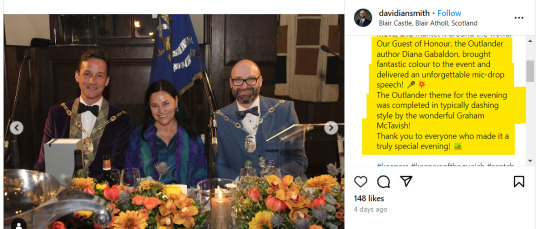
This guy is just not your regular Joe:

According to LinkedIn, Smith is the Head of Corporate Relations at Diageo Scotland and the current Chair of the Keepers of the Quaich Management Committee. His resume is also very instructive and rich: a network guy, with two postgraduate diplomas in PR and Journalism (Strathclyde University for Journalism and Queen Margaret University, for PR), followed by a rich professional experience in those fields (The Tribune, The Scotsman, Daily Mail and Daily Record - various reporting appointments; Movement to Work - a leading 'British business coalition, which really means an NGO, primarily dealing with fostering the access of young people on the labor market). He's been at Diageo for 13 years already, but (and this is somehow important) only at a regional level.
But this time, it's something else that is more interesting than just a brief overview of someone's professional life, because he posted exactly the same thing and exactly the same photos on his LinkedIn account:


157 likes, 14 comments - barely enough to judge the real impact on a broader scale, more than clear when scale is reduced to that guy's own network. And because herd instinct is very much a corporate world characteristic, we have many people from Diageo itself (the North America and Asia branches, for example), along with a smattering of old press friends, the odd Scottish Parliament member or several people from the spirits industry, mainly local (EDI and GLA). Only one comment mentions Outlander and just another one mentions 'Erself and McGrandma: funnily enough, from somebody who works for Johnnie Walker, another Diageo-owned whisky company #lipservice.


You call that networking? I call that an amateur attempt at that, Anon. After Paul Novielli's recent departure from McTavish Spirits, something had to be done in order to keep people interested and intrigued by the idea McGrandma was a spirits connoisseur, even if his 'life long dream' (🙄) was bourbon and continuity be damned. And forgive me again for quoting myself but... remember (LOL forever, really) what I wrote not so long ago?

(you'll find more about that, here: https://www.tumblr.com/sgiandubh/744768055641604096/no-amontillado-in-that-cask?source=share)
Now I know others want things to be drama-free and are completely blind to patterns. But it's plain to see what the game is about, here: envy, lack of ingenuity and repressed lust come to mind. But hey, maybe it's me, Anon. And at face value, clearly looking for alternative contacts and opportunities, in the UK.
Interesting. Let's see what the next hand's gonna give, at this poker game. Not much, I think and probably not what was hoped for.
I hope this answers your question. I took time I can't really afford to answer it, but I did it with pleasure.
48 notes
·
View notes
Text




Scottish Playwright, writer and Artist John Patrick Byrne was on January 6th 1940 in Paisley.
John Byrne where he grew up in the Ferguslie Park housing scheme and was educated at the town’s St Mirin’s Academy before attending Glasgow School of Art, where he excelled. In his final year he was awarded the Bellahousten Award, the school’s most prestigious painting prize, and spent six months in Italy, returning a masterful and confident young artist. His work is held in major collections in Scotland and abroad.
Several of his paintings have hang in The Scottish National Portrait Gallery in Edinburgh, the Museum of Modern Art and the Kelvingrove Art Gallery and Museum in Glasgow. In 2007 he was made a full member of the Royal Scottish Academy and is an Honorary Fellow of the GSA, the RIAS, an Honorary Member of the RGI and has Honorary Doctorates from the universities of Paisley, Glasgow, Aberdeen and Strathclyde.
It was by no means an overnight success for Byrne, he was making a living designing book covers for publishers Penguin before recognition, Byrne has also designed record covers for Donovan, The Beatles, Gerry Rafferty, Billy Connolly, and The Humblebums as well as illustrations for the renowned Scottish writer James Kelman.
As well as his artwork Byrne was an accomplished writer perhaps best known as the writer of The Slab Boys Trilogy of plays which explore working-class life in Scotland, and of the excellent TV dramas Tutti Frutti and Your Cheating Heart.
In 2018 Byrne was named Scotland’s most stylish man at the age of 78 at the Scottish Style Awards in Glasgow, beating Outlander star Sam Heughan to the coveted most stylish male title, which was previously won by Richard Jobson, Robert Carlyle, James McAvoy and Paolo Nutini. Byrne, a good friend of comic, Billy Connolly Byrne said at the time he was shocked at the award saying “I dress like a tramp”.
The highlights the quintessential Scottishness of Byrne’s work, and his enduring humour and his focus on the frailty of human experience often lived on the edge of working-class communities. It is a richly rewarding show which underscores r give John Byrne a rightful place as one of Scotland’s finest and most prolific artists.
His most recent work has been murals - one for the ceiling of the King's Theatre in Edinburgh and another in Glasgow to mark the 75th birthday of his friend Billy Connolly.
During lockdown he worked with Pitlochry Festival Theatre to create a new play which was produced and performed remotely.
He and his wife Jeanine also collaborated on a children's book, Donald and Benoit.
Everything he did was drenched in colour. Without him, the world feels a less colourful place.
John Byrne passed away on Thursday November 30th aged 83.
Everything he did was drenched in colour. Without him, Scotland and the world feels a less colourful place.
38 notes
·
View notes
Text
A Patch of Oxeye Daisies...

🔴A patch of oxeye daisies that just had to be painted. It grows every summer in the grounds of Strathclyde University. A magical sight right in the centre of the city of Glasgow, the dear green place.
If you are interested in my work, you will find a link in my profile that will lead you to my Etsy shop, where you can find all my currently available original art, and also my other social media if you want to follow me elsewhere.
Your support on social media is greatly appreciated, all your interactions on help me make a living by increasing my visibility.
#Oxeye Daisies#Daisies#Soft Pastel#Soft Pastel Art#Pastel Painting#painting#artwork#Scottish Artist#Made In Scotland#Landscape#Landscape Painting#Trees#Wildflowers#Flowers#Flower#Flower Art#Flower Painting#etsy#art#artists on tumblr
16 notes
·
View notes
Text

Jamie Roy is Brian Fraser
Rising Scottish Talent in Blood of My Blood series
Jamie Brian Roy is a Scottish actor, born in April 1993 in Greenock, Scotland, 🏴 and raised in Glasgow, Scotland. Prior to acting, he completed a Bachelor's Degree in International Business and Entrepreneurship at Strathclyde University in Glasgow.
Jamie Roy has completed work on a variety of productions, most notably "Burning Little Lies”(2021) on Lifetime, and "Your Boyfriend is Mine” 2022) on Lifetime.
youtube

14 notes
·
View notes
Text

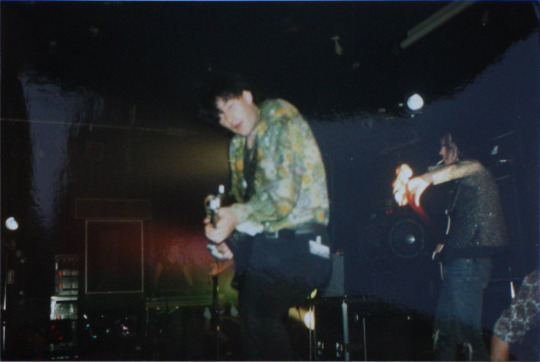

The Sisters of Mercy performing at Strathclyde University in Glasgow, Scotland. May 1984
35 notes
·
View notes